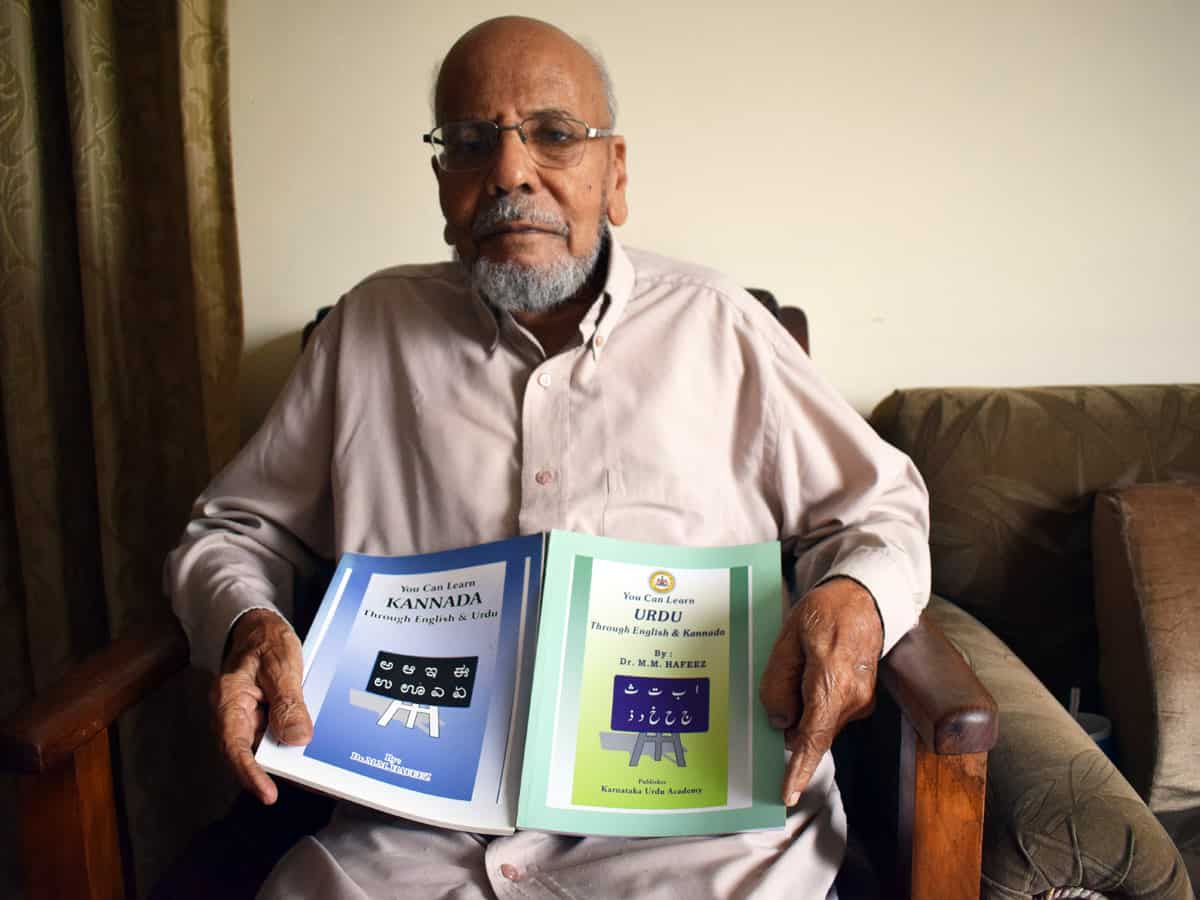M. A. Siraj
Dr. M. M. Hafeez, a Bengaluru-based former scientist turned a centenarian last July. He celebrated his birthday by launching his latest book “Learn Urdu Through English & Kannada”. The 110-page book is a learning guide for those who would like to pick up Urdu through the medium of Kannada and English. It is a sequel to his previous book “Learn Kannada Through English & Urdu” that came a decade ago around his 90th birthday.
Hafeez has not been a man to sit quiet even in his advanced age. Having earned a doctorate in Chemistry (Sugar Technology), he had written several books on the subject as the Fellow of Royal Society of Chemistry, London. He thought of compiling trans-lingual Learners Guide for those wishing to learn Kannada and Urdu. The first book– “Learn Kannada Through English & Urdu” was widely welcomed as Bangalore was witnessing influx of workers from several north-Indian states. The latest book–Learn Urdu Through English & Kannada–is meant for both teachers as well as learners. For ease of learning, the meaning and pronunciation of the Urdu words and phrases have been provided in Kannada and English. Occasionally, help has also been taken from Hindi which has great commonalities with Kannada terms but is phonetically and grammatically closer to Urdu. Says Dr. Hafeez, there is an effort to explain the simple grammar of the two languages but not to the extent of making the text cumbersome.
Both books enable the learners to develop vocabulary of nearly a thousand commonly-used words in respective languages. He was guided by Prof. K. P. Bhatt, retired professor of Kannada in Bangalore University. While the previous book was published by a private publisher, the latest book has been brought out by the Karnataka Urdu Academy.
Dr. Hafeez took his PG degree in Chemistry from the Indian Institute of Science and went to England to pursue further studies at the Royal College of Science and Technology of the Glasgow University. He even owns a few patents for having developed processes for heat recovery while working in Mysore Sugar Mills and Mandya. However, his interactions in Europe stoked passion to learn as many languages as possible and undertake production of cross-lingual learners’ guide for the Indian languages—mainly Urdu, Hindi and Kannada—in which he had developed competency. English chipped in as it facilitated comprehension across all educated Indians.
It took the author around two years to compile the book. According to him, Kannada has 49 letters, Urdu 37 and English 26. These languages having developed in widely diverse geographical regions, are not a mirror image of each other. Each of them has unique characters. All Urdu alphabets are consonants and diacritical marks are used for bringing in vowels whereas all Kannada words end on vowels. Urdu is written from right to left while English and Kannada scripts flow from left to right. Urdu letters when combined for a word lose their individuality and turn into a distinct picture. Search for a composer who could string them together and compose all of them in a linear text or in a tabular format on computer took several months. Several Kannada alphabets have sounds that do not find echo in alphabets of other languages.
Hafeez expects these guides to bridge the linguistic gaps, bring the people closer to each other and allow access to the rich literary traditions of each of them.

